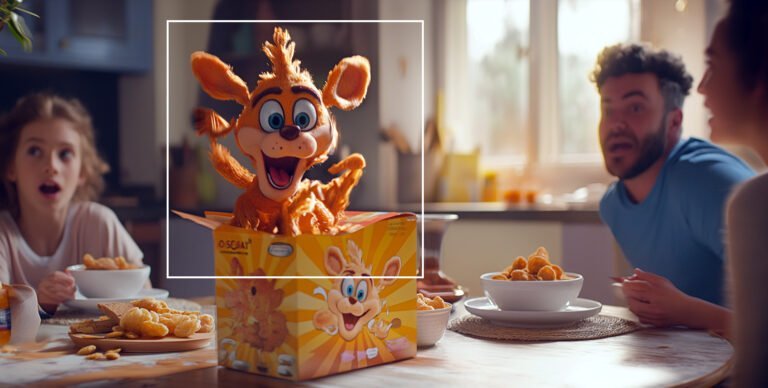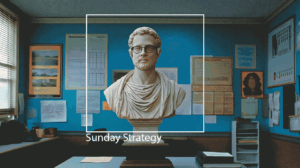//Originally posted on LinkedIn as an article for the Rival Spark research program
The term relationship takes on different meanings depending on who it is directed towards. The relationship an individual has with their family, friends, teachers or managers changes its definition. This is especially true of brands and marketing, where many seek a relationship with consumers without fully defining what it means to either. Brand relationships are often equated with conversations around loyalty, challenger brand growth, purpose and more – but what do consumers really want from a brand over time?
Our research considered how to quantify brand relationships, by thinking about the elements that shape them: an individual’s needs and opinions and the expectations they have from how others interact and behave towards them. By considering how consumers’ currently see the world and how this shapes what they want from their ‘ideal brands’, we can get under the skin of the broad world of consumer relationships.
Consumers Want Brand Value Now & From What’s Next
Currently consumers are awash with news of uncertainty, from high numbers of those living pay-check to pay-check, to stories of layoffs across sectors. However, consumer outlook doesn’t easily map to the negativity all around us. US consumers are responding to economic uncertainty by seeking out higher income, not just the most available job.
In fact, consumers across the US / UK are personally more optimistic about their finances and overall life than they are about the global economy or their country’s economic and cultural situations. This creates an interesting balance, as brands trying to build relationships with consumers in 2023 have to navigate a consumer who sees the world as troubled, but their lives as currently separate from it. While marketers don’t know if this means they feel truly disconnected from the maelstrom around them or if they’re waiting for it to reach their shores, it does mean many brands have to strike a tone that is personally more bullish than it is macro-bearish.
In times of economic hardship, consumer expectations become more pragmatic, but our research shows that brand purpose and an expectation of providing a greater value than just price is present due to consumer’s personal optimism. Overall, brands are expected to provide a wider, future facing purpose and vision, while still acknowledging economic headwinds and competing on immediate value from price and benefit.
The Ideal Brand Relationship In Terms of Value & Focus
As brands are split between immediate and future expectations, behaviour and the relationships they attempt to form often try to bridge the gap. Our research considered three perspectives on the ‘ideal’ brand for a number of sectors to define brand relationships: archetypal relationships, brand focus (today vs. the future) and brand value (understanding vs. objective performance).
Your Friendly Neighbourhood ____________
Archetypally, consumers were asked what type of relationship they would like ideal brands in various sectors to create (e.g. acting like my friend, teacher, parent, etc.). The data show that while consumers overwhelmingly want a brand to act like their friend, seemingly a trusted someone on equal footing, different sectors then had secondary relationships across different authority levels. Based on product realities, consumers were likely to want cleaning products to be a friendly butler, whereas they want a bank to be a friendly leader or boss. Friendship is a given, authority is where brand relationships differentiate across sector.
Today vs. Tomorrow & Performance vs. Understanding
Building on this, we considered ideal brands in focus and value. We asked consumers what an ideal brand in different sectors would focus on: the immediate reality of today or its future implications and impact. Additionally, we asked what type of value each would provide to fuel a relationship: being the best and delivering respect and performance or understanding and relevance, embedding the brand in consumer’s lives.
These two axes created a map of ideal brand relationships which changes across sectors, as what consumers need and expect from a brand change. Brands orbit around this center of gravity, pulling away from it to find perceptual open space to challenge a category or differentiate.
Sector truths were seemingly verified, as the ideal alcohol brand was seen as more understanding and focused on today than other sectors – serving as a supporter. Alternatively, performance necessary sectors such as air travel, technology or automobiles had ideal brands which pushed towards greater value from performance.
The Biggest Force in Brand Relationships is Cultural, Not Economic
As expected, lots of different factors shape the ‘ideal’ way for a brand to behave and build a relationship with consumers from markets and cultural differences to economic or social outlook.
Across markets, different brand behavior has shifted what consumers ideally expect from cars, banks, insurance and airlines significantly. For example, cars existing as a cultural touchstone in the US has led to the ideal car brand being more focused on understanding the audience’s life, vs. a more performance focused UK automotive brand.
Personal economic outlook also shifted ideal brand behavior, shifting brands across almost every sector towards a more immediate focus to deliver the best performance. This shift highlights that in times of economic trouble, consumers want something that ‘does what it says for the money’, vs. a brand that commiserates with them and understands their lives. Understanding and a focus on the future become increasing luxuries in personal economic hardships.
Most impactful however, was how social outlook influenced ideal brands, creating a ‘Culture Gap’ for brands to consider. Consumers who had a positive view of how society and culture are progressing were significantly more likely to want brands that understood their values and focused on the future – seemingly looking for partners that can participate in cultural progress.
Alternatively consumers who had a negative view of the direction of society and culture wanted brands to focus on being the objective best and cared about what they can immediately deliver. These consumers, many of whom are more traditional or conservative, weren’t looking for brands that understood their worries about culture, instead they wanted them to stay out of it and in effect, ‘stick to making products’
.
Implications for Brand Relationships
-
- It’s About More than Friendship: Across sectors, the widest archetypal relationship consumers want from a brand is that of a ‘friend’. Marketers need to be cautious about taking this statement too literally however, as friendship implies more about an equal relationship and earning familiarity vs. an open door for brands to interact. Considering what other types of relationships a consumer would ideally want on top of friendship starts to show how to earn that type of relationship.
-
- Don’t Economically Feel My Pain, Make Better Product: While consumer’s personal economic optimism is relatively high, many brands can focus on relevance and a forward facing relationship. However, if economic headwinds worsen and economic optimism fades, the push from customers will be to find brands that deliver immediate performance credentials over an understanding of the challenges their customers face. From product communications to brand purpose, if economic conditions worsen, what you are doing for me now will trump a shared view of the world – something easier to do in certain sectors (FMCG, Alcohol, Shoes) than others (Banking, Insurance, etc.).
-
- Reconcile Your Brand and Customer’s Worldview: The culture gap in brand relationships isn’t between progressive and traditional, but between progress and product. For brands with a customer base engaged with the direction of society, proving a dedication to partnering in progress is needed. Alternatively, for a more traditional consumer base who is societally negative, the ask isn’t to help them resist, but to stay more socially agnostic. For brands with socially negative consumers who feel they can’t stay on the cultural sidelines (or who have board or market pressures pushing from a cultural stance), preparing to jump the cultural gap and deal with existing customer resistance is key.
// Agency: We Are Rival
// Role: CSO / Co-Founder



